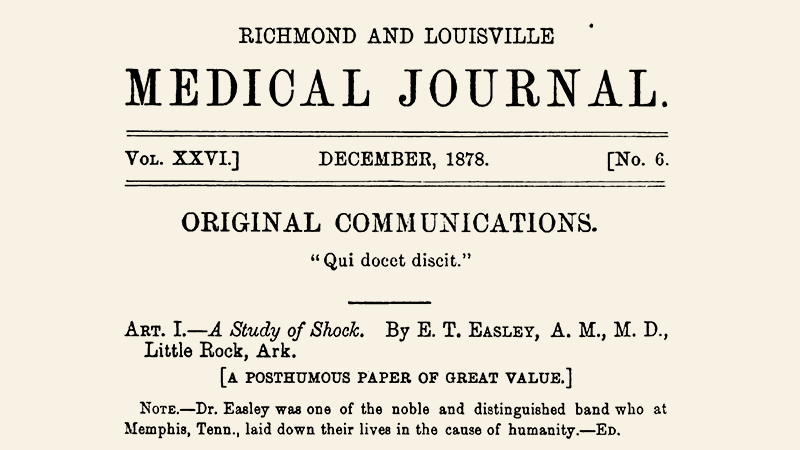The healthcare workforce lacks diversity. When we look at diversity in cardiothoracic surgery, my specialty, we find that only 17% of faculty are women and 12% are defined as underrepresented in medicine (URiM). Looking at trainees, 24% identified as women and 16% identified as URiM.1
But why does this matter?
There are two truths: first, workforce diversity is simply the right thing to do to achieve a society that is more integrated and just; and second, diversity also improves the bottom line of businesses and other organizations facing complex challenges in the knowledge economy.
University of Michigan mathematics professor Scott Page, PhD, identifies the quantitative value of diversity. He defines the “diversity bonus,” when teams think differently and bring different heuristics, as the collective performance that includes a bonus of production that is quantifiable.2 This bonus, plus the cultural competency of care providers, optimizes the implementation of healthcare.
Marcella Aslan, MD, PhD, MPH, and her research team in a study of primary care in Oakland, CA, found that Black men seen by Black physicians agreed to more preventative services than those patients seen by non-Black doctors; these effects seem to be driven by better communication and more trust.3
Greenwood and others studied patient physician-gender concordance and its effects on mortality among female heart attack patients. The group found that mortality rates decreased when male physicians practiced with more female colleagues or have treated more female patients in the past.4
Seeing voluminous compelling data, the University of California made a bold move and updated its academic personnel policy for faculty appointment and promotion. Its new policy dictated that to achieve appointment and promotion, a candidate must document contributions to diversity in one or more of the traditional activities of academic excellence. In defense of the new policy, the University of California at Davis chancellor Gary S. May, PhD, MS, and Renetta Garrison Tull, PhD, vice chancellor of diversity, equity and inclusion, stated that a “true commitment to diversity, equity and inclusion is active and not passive…and actively seeks solutions to remove barriers that would facilitate inclusion.… Attention to the needs of our evolving and diverse student body necessitates assessment of faculty contributions to diversity in support of the broader mission of higher education.”
Contributing to diversity is part of the stated mission of many institutions, and it is logical for those institutions to have their faculty and/or staff be in line with that mission.
You may ask yourself, “What can I do?”
There are numerous examples of how an individual surgeon can contribute to diversity in healthcare. For example, being involved with the training program at one’s own institution can assist with the recruitment, retention, and successful graduation of diverse trainees. In the role of an assigned mentor, an assistant, associate or program director, member of the program evaluation committee, clinical competence committee, or applicant interviewer, one can foster a welcoming and supportive environment of inclusion for diverse candidates and trainees. Most medical schools have a diversity in medicine visiting elective program or clerkship, which facilitates diverse candidates to visit your residency program.
These programs often are underutilized. Martin and others looked at cardiothoracic surgery training program director awareness of available visiting medical student clerkships for URiM students. This survey of program directors found that 61% were aware of these URiM visiting clerkships at their institutions, but only 44% had participated in the past 3 years.5
Within our surgical societies there are many opportunities to contribute to diversity. The ACS, The Society of Thoracic Surgeons (STS), and other surgical societies have avenues to volunteer as a mentor. The Young Fellows Association of the ACS hosts a speed mentoring event at Clinical Congress every year. The STS performed a climate survey of its members, asking them the question “What are some of the barriers to diversity and/or inclusion within cardiothoracic surgery?” For respondents who self-identified as women, Black, and/or Asian, the number one response was “few URiM and/or women CT surgery mentors and role models,” stressing the importance of mentorship.6
Can you mentor someone who does not look like you?
The answer is a resounding yes. Becoming a successful mentor requires engaging in cross-demographic mentorship. An individual does not need to look like the colleague they are helping, but must endeavor to understand and acknowledge that colleague’s professional needs. Those needs may include:
- Professional development training
- Access to opportunities and networks
- Emotional support to manage the stressors of academic advancement
- Institutional sponsorship
- Serving as a role model whose success they want to emulate
- Providing a safe space to discuss experiences
- Providing honest, direct, and constructive feedback7
If an individual cannot directly mentor an early career colleague, then that individual’s professional expertise can still be of value by directing the mentee to other faculty members and staff as part of a mentoring team that can fill the mentee’s needs. An individual also can be a “connector” by introducing a diverse colleague to their professional network, providing productive and career-enhancing interactions across an organization or specialty.
Many of my mentors do not look like me and are from vastly different backgrounds than I. But the common denominator is that they care about me and my professional success.
In summary, diversifying our workforce is now a mission of our industry. Contributing to diversity is not difficult and it can be accomplished as part of your routine career. Women and URiM trainees, junior faculty, and staff require mentorship, yet you do not need to look like your mentee to be an effective mentor. At a minimum, be a connector providing mentees access to your extensive network.


